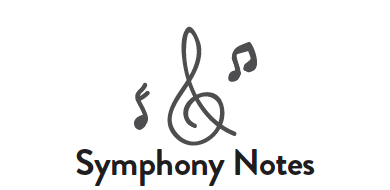Overture to The Italian Girl in Algiers
Gioacchino Rossini
Gioacchino Rossini, the earliest of the geniuses of the bel canto style, was born in Pesaro, Italy, on Feb. 29, 1792, and died in Paris on Nov. 13, 1868. Although he composed many tragic operas as well as non-operatic works, he is still most honored for his brilliant comic operas, especially the immortal The Barber of Seville of 1816. L’italiana in Algeri was Rossini’s first great comedy, receiving its premiere at the Teatro San Benedetto in Venice on May 22, 1813. It was originally scored for piccolo/flute, two oboes, two clarinets, two bassoons, two horns, two trumpets, timpani, percussion and strings.
Rossini was notorious for writing his operas at great speed. Only recently has the opera-loving public come to realize that these works came into existence very much in the same way that a modern hit musical comedy does in its pre-Broadway “shakedown” stage, with additions and cuts being made at every turn. Rossini’s attitude toward his overtures was even more cavalier. Often, as is the case with the overture to The Barber of Seville, Rossini used previous material that had absolutely nothing to do with the opera with which it eventually became associated.
The overture to the Italian Girl in Algiers seems always to have belonged to the comedy of the same name, however. The entire opera, which took Rossini either 27 or 18 days to compose, depending on the source, is set in the court of Mustafà, the bey of Algeria who has forsaken his faithful wife, Elvira, in favor of one of the Italian girls about whom he has heard so much. The wily Isabella appears on the scene and proves too much for Mustafà to handle. All persons, in the end, are happily reconciled. The witty overture is filled with all the Rossinian tricks for which the composer is beloved — charming tunes, brilliant woodwind writing and, of course, the obligatory crescendo that rushes toward an exciting climax.
Concerto No. 1 for Piano and Orchestra, LW H4
Franz Liszt
Franz Liszt was born on Oct. 22, 1811, in Raiding, Austria (then the village of Doborján, Hungary) and died on July 31, 1886, in Bayreuth, Germany. Liszt was one of the first great piano virtuosos of the modern era. He began work on his Piano Concerto No. 1 in 1830 and completed it in 1849. He further revised it in 1853. Its first performance took place in Weimar on Feb. 17, 1855, with the composer as soloist and Hector Berlioz conducting. The work is dedicated to the pianist/composer Henri Litolff. Liszt composed only one other concerto for piano (1857/61), although his “Totentanz” for piano and orchestra (begun in 1838, finished in 1849 and later revised) receives frequent performances. The designation “LW H4” refers to the thematic catalogue of his works. It is scored for solo piano, piccolo, two flutes, two oboes, two clarinets, two bassoons, two horns, two trumpets, three trombones, timpani, cymbals, triangle and strings.
Franz Liszt is a composer who defies simple categorization. Born Hungarian, he pursued his career in France and Germany — everywhere and nowhere at home. No sooner do we label him as a virtuoso pianist, his accomplishments as a conductor and composer of symphonic poems come into view. Many accuse his music of being bombastic, and yet many of his works exhibit a gentleness that whispers in our ear. His reputation as an egoist is given lie by the generosity he exhibited toward Chopin, Berlioz, Wagner and many other composers. The notorious young womanizer later morphs into the devout Catholic cleric of maturity. Mephistopheles, meet Abbé Liszt.
In truth, he was one of most generous-spirited musicians of his age, going to great lengths to spread the gospel of the music of Beethoven (making transcriptions and giving performances of all nine symphonies where orchestras either did not exist, or were not up to the music’s required demands. He also was the primary agent in raising money for the creation of a statue of Beethoven in the master’s native town of Bonn). Liszt made many other concert transcriptions of works by other composers, including Mozart and Verdi. He also was a champion of the careers and music of Chopin, Berlioz and Wagner (who eventually became Liszt’s son-in-law). Most people, however, persist in thinking of him first and foremost as the great barnstorming wizard of the piano.
The reputation is well deserved. Liszt was for the piano what Niccolò Paganini was to the violin — a technician of unbelievable proportions. His Piano Concerto No. 1 is emblematic as a vehicle for Liszt’s well-deserved reputation as a piano virtuoso of the first order. But it also is a prime example of a technique known as thematic transformation — a compositional process used extensively by Berlioz, Liszt and Wagner, whereby thematic ideas morph into different guises as befit the changing mood of the music. This differs from theme and variations in that the structure is far less formal.
The overall form of the piece is a four-movement design more closely akin to the sonata cycle found in symphonies and chamber music than the standard three discrete movements of a traditional concerto. The model for this structure may have been Franz Schubert’s solo piano work known as the “Wanderer Fantasy” (1822), a work that Liszt knew very well and transcribed for piano and orchestra in 1851 when the Concerto No. 1 had not yet reached its final iteration.
Legend has it that the muscular main theme of the piece, which is stated boldly right at the start, limns the rhythmic structure of the German “Das versteht ihr all nicht, haha!” (None of you understand this, haha!). We will hear this theme many times throughout the work. A slower and more lyrical section (Quasi Adagio) bears the influence of both Schumann (clarinet paired with the soloist) and the world of bel canto opera (a Bellini-Donizetti-Chopinesque nocturne). The sound of the triangle ushers in a faster Allegretto vivace, which eventually takes a darker turn. The final section transforms the Adagio melody into an Allegro marziale animato, where many of the themes heard earlier in the concerto return, either transformed or more or less in their original brilliance. The solo part ends with ferocious octaves (also heard earlier in the piece), bringing the concerto to its thrilling conclusion and giving the orchestra the final two chords.
Symphony No. 6 in B minor, op. 74 (“Pathétique”)
Peter Ilyich Tchaikovsky
Peter Ilyich Tchaikovsky was born on May 7, 1840, in Votkinsk, Russia, and died on Nov. 6, 1893, in Saint Petersburg. He remains one of the most popular composers of all time, beloved especially for his symphonies, ballets and concertos. His Symphony No. 6 was composed between February and August 1893, the final year of his life, and received its first performance in Saint Petersburg on Oct. 28 of that year. It is scored for piccolo, three flutes (third doubling piccolo), two oboes, two clarinets, two bassoons, four horns, two trumpets, three trombones, tuba, timpani, percussion and strings.
The composer’s brother, Modest, suggested that Tchaikovsky’s be labeled “Tragic,” but this name was rejected and the composer agreed to its popular title of “Pathétique.” Consideration of title aside, Symphony No. 6 is the crowning achievement of one of the most effective symphonists who ever lived. The circumstances surrounding the composer’s death — was it suicide prompted by the revelation of his homosexual liaison, or did he die of poisoning from drinking a glass of unboiled water? — only adds to the mystique surrounding this, the most unorthodox of all his symphonies. Scholars still disagree as to the truth of the matter, but when asked if “Pathétique” had a program, Tchaikovsky responded only by confessing that it “is saturated with subjective feeling” and that “in my mind I shed many tears (in composing it).” Nothing conclusive here.
For those who turn to biographical events to explain how a certain piece of music came into existence and to gain understanding of the nature of that piece ought to bear in mind that Tchaikovsky penned one of his most cheerful scores, “The Nutcracker” ballet, at the same time he was working on Symphony No. 6, his most fatalistic composition. Donald Francis Tovey has said of the “Pathétique” symphony: “All Tchaikovsky’s music is dramatic; and the Pathetic Symphony is the most dramatic of all his works. Little or nothing is to be gained by investigating it from a biographical point of view.” With this in mind, one must turn to the work itself to learn what makes it such a special part of the orchestral repertory.
There can be no disagreement as to this symphony’s inherent dramatic qualities, which are most abundantly apparent in its outer movements. Only a composer confident in his abilities as a dramatist would dare to end a symphony with the desperate Adagio lamentoso, with pulsating cellos and basses fading to pppp, an extraordinary fading away to the softest dynamic level possible. A primary factor that endears Tchaikovsky’s music to so many listeners is a wealth of tuneful melodies. What can rival the beauty and lyricism of the famous second theme of the first movement, or the felicitous tune of the 5/4 meter Allegro con grazia second movement? Another salient feature of Tchaikovsky’s style is its mastery of orchestration. Here too, “Pathétique” will not be found wanting. Among the most ingenious moments may be found in the sonorities that he invokes at the end of the first movement (pizzicato strings in descending scales as a background to the singing winds and brass), the brilliant opulence of the Allegro molto vivace scherzo, and the dark and brooding tension of the finale. The descending scale, in fact, is a feature that may be found toward the end of each of the symphony’s four movements, a feature that unites its disparate parts.
The sum of the parts, however, adds up to something less than the whole of this masterpiece of orchestral music. Its drama speaks eloquently for itself, and the impression that it makes defies analytical explanation. One must, in the final analysis, sense the spirit of the “Pathétique” symphony as the work of profound expression that it is.
David B. Levy is professor of music at Wake Forest University in Winston-Salem, North Carolina. He will present a pre-concert lecture on Thursday’s program at 6:45 p.m. in the Hurlbut Church sanctuary





